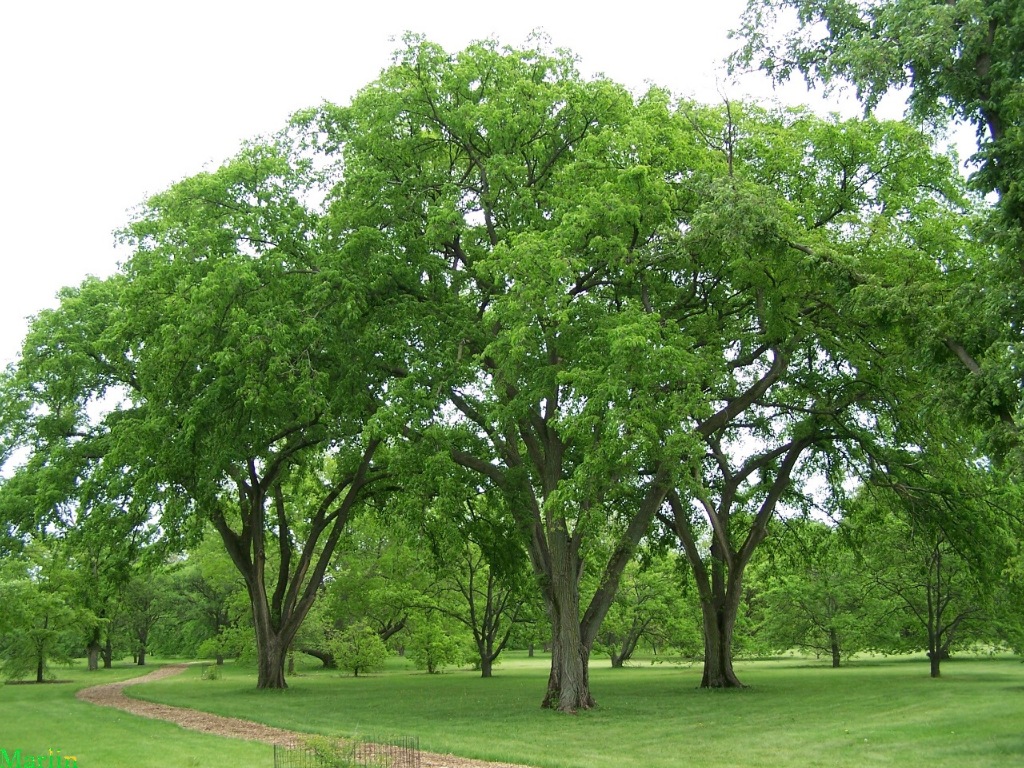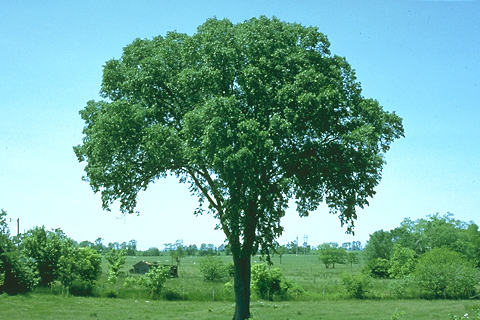Ulmus americana
 One of the grandest of American trees, the vase shape, and bright yellow fall colors make this a distinctive landmark tree. This most dignified tree was nearly wiped out by the Dutch Elm disease. This new resistant strain will grow anywhere in the U.S. with adequate water.
One of the grandest of American trees, the vase shape, and bright yellow fall colors make this a distinctive landmark tree. This most dignified tree was nearly wiped out by the Dutch Elm disease. This new resistant strain will grow anywhere in the U.S. with adequate water.
Also known as the Water, White or Soft Elm, this large graceful tree has a vase-shaped crown and a thick rounded base. Its far-reaching branches provide wonderful shade in the manner of the great oaks. It belongs to the Ulmaceae Family, which includes hackberries and elms. It is the americana species of the Ulmus genus, which is Latin for elm, and is the most grandiose of the 20 native US species. It can grow to 140' with an 8' trunk diameter.
The leaves are dark green, 3-6" long and grow in two rows. They are elliptical shaped, sharp at the points with toothed edges. They turn a bright yellow in autumn. The bark is light gray and deeply furrowed with scaly ridges. The wood is hard, heavy, and tough. Because of its durability, it was once used for the hubs of wagon wheels and the Iroquois used the bark for canoes and for making rope.
 Its native habitat ranges from central Canada to central Texas and east to the Atlantic. It prefers rich, well-drained and moist soils but will adapt to most conditions anywhere in the US. It will grow successfully in the West with sufficient water. It is valued for timber, wildlife habitat, and as a shelterbelt.
Its native habitat ranges from central Canada to central Texas and east to the Atlantic. It prefers rich, well-drained and moist soils but will adapt to most conditions anywhere in the US. It will grow successfully in the West with sufficient water. It is valued for timber, wildlife habitat, and as a shelterbelt.
The American Elm was once an abundant tree but has been decimated by the Dutch Elm disease caused by a fungus accidentally introduced about 1930. Trees are immune from the disease until they are about ten years old. The seeds in this kit are from a resistant strain of American Elm.
